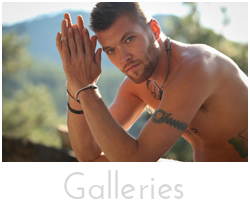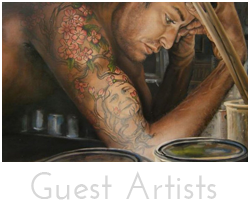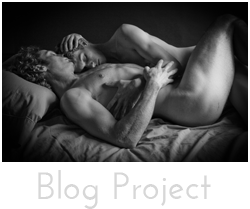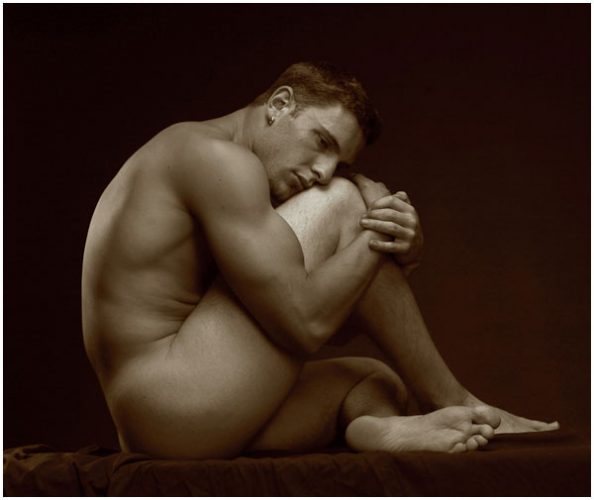 Last night I photographed the archival images for the Montana Rep’s production of William Inge’s play Bus Stop, which is currently doing a short run here in Missoula before it hits the road on a national tour. Bus Stop is not one of Inge’s best works, but it is very interesting in the way he creates eight characters from completely different perspectives and weaves a complex web on the theme of loneliness. I saw a dress rehearsal last week so I could get a feel for the show before I create the images. For those of you who do not know the show, it’s about a group of people that are stranded in a café (bus stop) for the night due to a snowstorm and how they all find their way bumbling while confined by the darkness of night and the cold world that surrounds them. It’s touted as a comedy, but did not come across as such when I saw the rehearsal. I think a live audience will find the humor and irony of its situations and the comedy will emerge. Though the theme of loneliness is universal, the play itself seems somewhat hard to access because of it is set in the 50’s and it is a time we no longer relate to or recognize. The story centers on a young nightclub singer who has been abducted by a young cowboy who is trying to force her to live him by taking her to a remote ranch in the wilds of Montana. What struck me more with this production was the relationship between Bo, the young cowboy and Virgil, an older cowboy and his mentor was their relationship. Everyone seems to find their way though the course of the show except this character Virgil who ends the play on a rather sour note:
Last night I photographed the archival images for the Montana Rep’s production of William Inge’s play Bus Stop, which is currently doing a short run here in Missoula before it hits the road on a national tour. Bus Stop is not one of Inge’s best works, but it is very interesting in the way he creates eight characters from completely different perspectives and weaves a complex web on the theme of loneliness. I saw a dress rehearsal last week so I could get a feel for the show before I create the images. For those of you who do not know the show, it’s about a group of people that are stranded in a café (bus stop) for the night due to a snowstorm and how they all find their way bumbling while confined by the darkness of night and the cold world that surrounds them. It’s touted as a comedy, but did not come across as such when I saw the rehearsal. I think a live audience will find the humor and irony of its situations and the comedy will emerge. Though the theme of loneliness is universal, the play itself seems somewhat hard to access because of it is set in the 50’s and it is a time we no longer relate to or recognize. The story centers on a young nightclub singer who has been abducted by a young cowboy who is trying to force her to live him by taking her to a remote ranch in the wilds of Montana. What struck me more with this production was the relationship between Bo, the young cowboy and Virgil, an older cowboy and his mentor was their relationship. Everyone seems to find their way though the course of the show except this character Virgil who ends the play on a rather sour note:
“GRACE. There’ll be a bus to Kanz City in a few minutes. I’ll put the sign out and they’ll stop.
VIRGIL. No, thanks. No point in goin’ back there.
GRACE. Then I’m sorry, Mister, but you’re just left out in the cold.
VIRGIL. Well . . . that’s what happens to some people.”
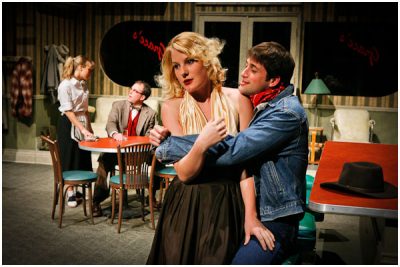 A light went on in my head and suddenly realized that the character of Virgil was actually gay and has an unrequited connection to the young cowboy, so when Bo goes off with the nightclub singer he is completely left out in the cold, unable to go back and uncertain of the future. I know Inge was a closeted gay man and a lot of his writings are about people who struggling with identity. He was a protégé of Tennessee Williams who encouraged him to write. I think it’s interesting that the artist who creates a whole treatise on a theme of loneliness inserts himself through this seemingly minor character. It’s a very bleak look on a lifestyle that was isolated and taboo in the 50’s. I am not sure the audience of the 50’s would have made this connection since it was so hidden. I suddenly identify with Inge’s loneliness and see this isolation within my own work. I think it’s the power of what makes my images strong, they are imbued with so much of my own feelings of isolation and loneliness. Have times really changed? Are we as a gay culture still left out in the cold? It feels like our connections are lost not to the world that surrounds us but more by internalized homophobia from within our own community. Though the gay communities are uniting and becoming open as a culture, it feels like the distance has become a chasm where so many are still lost. Are we still strangers in the night?
A light went on in my head and suddenly realized that the character of Virgil was actually gay and has an unrequited connection to the young cowboy, so when Bo goes off with the nightclub singer he is completely left out in the cold, unable to go back and uncertain of the future. I know Inge was a closeted gay man and a lot of his writings are about people who struggling with identity. He was a protégé of Tennessee Williams who encouraged him to write. I think it’s interesting that the artist who creates a whole treatise on a theme of loneliness inserts himself through this seemingly minor character. It’s a very bleak look on a lifestyle that was isolated and taboo in the 50’s. I am not sure the audience of the 50’s would have made this connection since it was so hidden. I suddenly identify with Inge’s loneliness and see this isolation within my own work. I think it’s the power of what makes my images strong, they are imbued with so much of my own feelings of isolation and loneliness. Have times really changed? Are we as a gay culture still left out in the cold? It feels like our connections are lost not to the world that surrounds us but more by internalized homophobia from within our own community. Though the gay communities are uniting and becoming open as a culture, it feels like the distance has become a chasm where so many are still lost. Are we still strangers in the night?

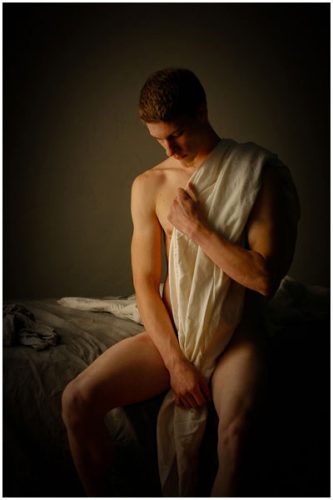
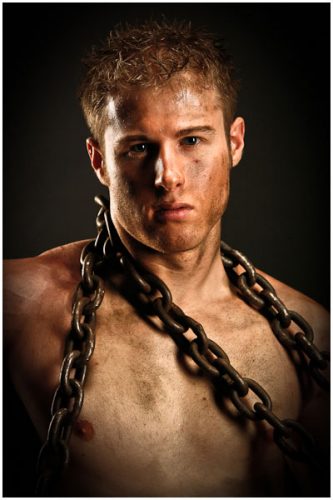 I am three weeks in on the blog process with forty-nine to go. It is time to step back for a moment and assess where I am and re-establish new goals. Yesterday one hundred and eighty four people accessed the blog. Overall one thousand thirty nine people have visited the first twenty-two postings. I am continuing to make the connection on Facebook and Red Bubble and feel like my network of artists and supporters is ever growing. I have reconnected with people I have not seen in years, so on a personal level I have achieved my intended goal for the first phase. I am now on to the making a presence of my artistry on the web a reality. I need to somehow become marketable and earn a living from what I am passionate about. Standard commercial photography in Missoula no longer seems viable. We have the Rocky Mountain School of Photography here that cranks out a hundred new photographers a year. Our market here is over saturated. It seems that everyone that owns a camera now has become a photographer and will work for next to nothing. I have always had to maintain a balance with multiple jobs and sources of income. Working as the Systems Operations Manager at UPS part-time in the evenings covers the basis of living and provides excellent benefits for me and my partner. Up until now photography has always sustained itself and allowed me to grow, but with the influx of so many new photographers working out of their cars, with cheaper equipment and laptops and no over head I am having to cut my cost to remain competitive. Those of us who are artistic and have spent years refining our craft to maintain excellent control of our light and have evolved as craftsmen are being pushed out of the market. One area that I have always focused on that I have been able to maintain is arts and entertainment, but even that seems to be losing momentum to the do-it-yourselfers. Therefore, it is this year that I reach out to a broader market, beyond my community and see where it takes me. I am really up for the adventure. So I have come up with this mutli-phase plan to put myself out there. The next phase is to create presence of my talents and skills. Many years ago when I was first emerging as a creative soul I did a program by Julia Cameron called The Artist’s Way. It was a 12-week program of self-examination and overcoming obstacles that prevented the creative self from emerging. It changed my life and gave me the freedom and courage to create. I have lived my life by it tenets. Somewhere in it Julia said, “If you put out there and name it what you desire the universe will provide.” Perhaps it is now time for me to reinvent myself and allow the artist to emerge.
I am three weeks in on the blog process with forty-nine to go. It is time to step back for a moment and assess where I am and re-establish new goals. Yesterday one hundred and eighty four people accessed the blog. Overall one thousand thirty nine people have visited the first twenty-two postings. I am continuing to make the connection on Facebook and Red Bubble and feel like my network of artists and supporters is ever growing. I have reconnected with people I have not seen in years, so on a personal level I have achieved my intended goal for the first phase. I am now on to the making a presence of my artistry on the web a reality. I need to somehow become marketable and earn a living from what I am passionate about. Standard commercial photography in Missoula no longer seems viable. We have the Rocky Mountain School of Photography here that cranks out a hundred new photographers a year. Our market here is over saturated. It seems that everyone that owns a camera now has become a photographer and will work for next to nothing. I have always had to maintain a balance with multiple jobs and sources of income. Working as the Systems Operations Manager at UPS part-time in the evenings covers the basis of living and provides excellent benefits for me and my partner. Up until now photography has always sustained itself and allowed me to grow, but with the influx of so many new photographers working out of their cars, with cheaper equipment and laptops and no over head I am having to cut my cost to remain competitive. Those of us who are artistic and have spent years refining our craft to maintain excellent control of our light and have evolved as craftsmen are being pushed out of the market. One area that I have always focused on that I have been able to maintain is arts and entertainment, but even that seems to be losing momentum to the do-it-yourselfers. Therefore, it is this year that I reach out to a broader market, beyond my community and see where it takes me. I am really up for the adventure. So I have come up with this mutli-phase plan to put myself out there. The next phase is to create presence of my talents and skills. Many years ago when I was first emerging as a creative soul I did a program by Julia Cameron called The Artist’s Way. It was a 12-week program of self-examination and overcoming obstacles that prevented the creative self from emerging. It changed my life and gave me the freedom and courage to create. I have lived my life by it tenets. Somewhere in it Julia said, “If you put out there and name it what you desire the universe will provide.” Perhaps it is now time for me to reinvent myself and allow the artist to emerge. I was born in the paperback section of the Mineral County Library in a small remote town of Superior in the mountains of western Montana. I have always looked upon my conception and birth as a mistake and though I didn’t understand it, as a kid felt like I didn’t quite belong. My mother was 17 and didn’t finish high school and my father, an all-star athlete, I suspect with dreams of a different future. They were married four months after I was conceived and I was born on May 23 1961. My mother says I was a happy baby, full of life, with an easy temperament. There are pictures that confirm this, but it is not what I remember. The overall invasive impression from those first few years of life wasn’t love but confusion, fear and hurt. My father seemed so distant with me all time and I felt more pushed away than desired. I, of course, felt smothered by my mother; I was her greatest joy and for this I felt my strongest connection to her. I became my mother’s son and a year and a day later my bother Mark was born and become my father’s son. I was sentimental and withdrawn and didn’t seem to interact with others very well. The strongest connection to those years was The Wizard of Oz. I was utterly terrified by the wicked witch and cowered behind the sofa in fear, but it was Dorothy and her journey and meeting that band of social misfits whom I truly identified with. It would break my heart every time I would watch it. Back then it was broadcast once a year on television and when I would see the commercial that it was coming up my heart would leap and sentiment would overwhelm me to tears. My mother threatened to not let me watch it because of how emotionally involved I would get and I would promise with all my heart that I would not cry this time and plead that she allow me to watch it. Looking back I think my sentimental nature is what isolated me from the others, we were a family of little to no emotions and the fact that I was bursting with them overwhelmed others. It was like no one quite knew how to deal with me and I was left alone. It was here that I retreated to a world of color. This I was good at, for this I was praised. This was my security and comfort. It created distrust in the world that surrounded me, which I still feel to this day, but it also nurtured within me a journey to search for meaning and connections in the oddest of circumstances and character, to discover a way back home, within myself.
I was born in the paperback section of the Mineral County Library in a small remote town of Superior in the mountains of western Montana. I have always looked upon my conception and birth as a mistake and though I didn’t understand it, as a kid felt like I didn’t quite belong. My mother was 17 and didn’t finish high school and my father, an all-star athlete, I suspect with dreams of a different future. They were married four months after I was conceived and I was born on May 23 1961. My mother says I was a happy baby, full of life, with an easy temperament. There are pictures that confirm this, but it is not what I remember. The overall invasive impression from those first few years of life wasn’t love but confusion, fear and hurt. My father seemed so distant with me all time and I felt more pushed away than desired. I, of course, felt smothered by my mother; I was her greatest joy and for this I felt my strongest connection to her. I became my mother’s son and a year and a day later my bother Mark was born and become my father’s son. I was sentimental and withdrawn and didn’t seem to interact with others very well. The strongest connection to those years was The Wizard of Oz. I was utterly terrified by the wicked witch and cowered behind the sofa in fear, but it was Dorothy and her journey and meeting that band of social misfits whom I truly identified with. It would break my heart every time I would watch it. Back then it was broadcast once a year on television and when I would see the commercial that it was coming up my heart would leap and sentiment would overwhelm me to tears. My mother threatened to not let me watch it because of how emotionally involved I would get and I would promise with all my heart that I would not cry this time and plead that she allow me to watch it. Looking back I think my sentimental nature is what isolated me from the others, we were a family of little to no emotions and the fact that I was bursting with them overwhelmed others. It was like no one quite knew how to deal with me and I was left alone. It was here that I retreated to a world of color. This I was good at, for this I was praised. This was my security and comfort. It created distrust in the world that surrounded me, which I still feel to this day, but it also nurtured within me a journey to search for meaning and connections in the oddest of circumstances and character, to discover a way back home, within myself.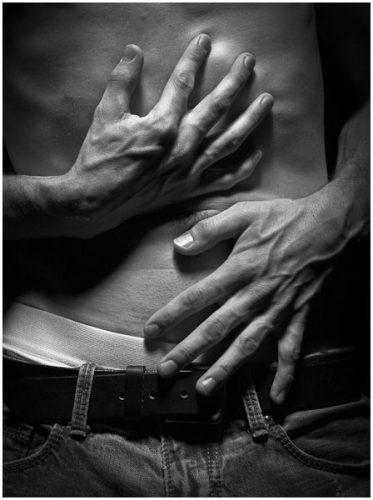 I once dated a guy who could only see the world in Black or White. Everything was either this or that, there was no in between. At first we clashed because I resisted and resented that the world could or should be seen in one way. I would argue for hours that though there was a black and a white there were many shades of gray that created a brilliant array of tones between the two. There was more subtlety to life than viewing it on a one-dimensional plain. That it was our human nature to be filled with all these various shades in our emotions. It is a compilation of all we have experienced to come to this moment of complexity. Life and photography go hand in hand, they are analogous with each other. It simply isn’t just this or that. I bring this up as a preface of things to come. At times things may seem contradictory and have inconsistencies; this is normal for me. I am a person who has lived in a complex time and at one point may believe or see something one way and at another point evaluate or have seen it from a completely different perspective. I will some times look at my work and see it a certain way, put it away for several years, pull it out and see it completely different. For instance reading The Portrait of Dorian Gray by Oscar Wilde, as a young man I saw it from the perspective and view it through the eyes of Dorian, but after recently rereading it, and becoming an artist who sculpts young men in beautiful light, I now see it from the artist Basil’s point of view and now it has a completely different context. It as all art becomes subjective to who we are and what’s in our head at the moment of viewing.
I once dated a guy who could only see the world in Black or White. Everything was either this or that, there was no in between. At first we clashed because I resisted and resented that the world could or should be seen in one way. I would argue for hours that though there was a black and a white there were many shades of gray that created a brilliant array of tones between the two. There was more subtlety to life than viewing it on a one-dimensional plain. That it was our human nature to be filled with all these various shades in our emotions. It is a compilation of all we have experienced to come to this moment of complexity. Life and photography go hand in hand, they are analogous with each other. It simply isn’t just this or that. I bring this up as a preface of things to come. At times things may seem contradictory and have inconsistencies; this is normal for me. I am a person who has lived in a complex time and at one point may believe or see something one way and at another point evaluate or have seen it from a completely different perspective. I will some times look at my work and see it a certain way, put it away for several years, pull it out and see it completely different. For instance reading The Portrait of Dorian Gray by Oscar Wilde, as a young man I saw it from the perspective and view it through the eyes of Dorian, but after recently rereading it, and becoming an artist who sculpts young men in beautiful light, I now see it from the artist Basil’s point of view and now it has a completely different context. It as all art becomes subjective to who we are and what’s in our head at the moment of viewing.